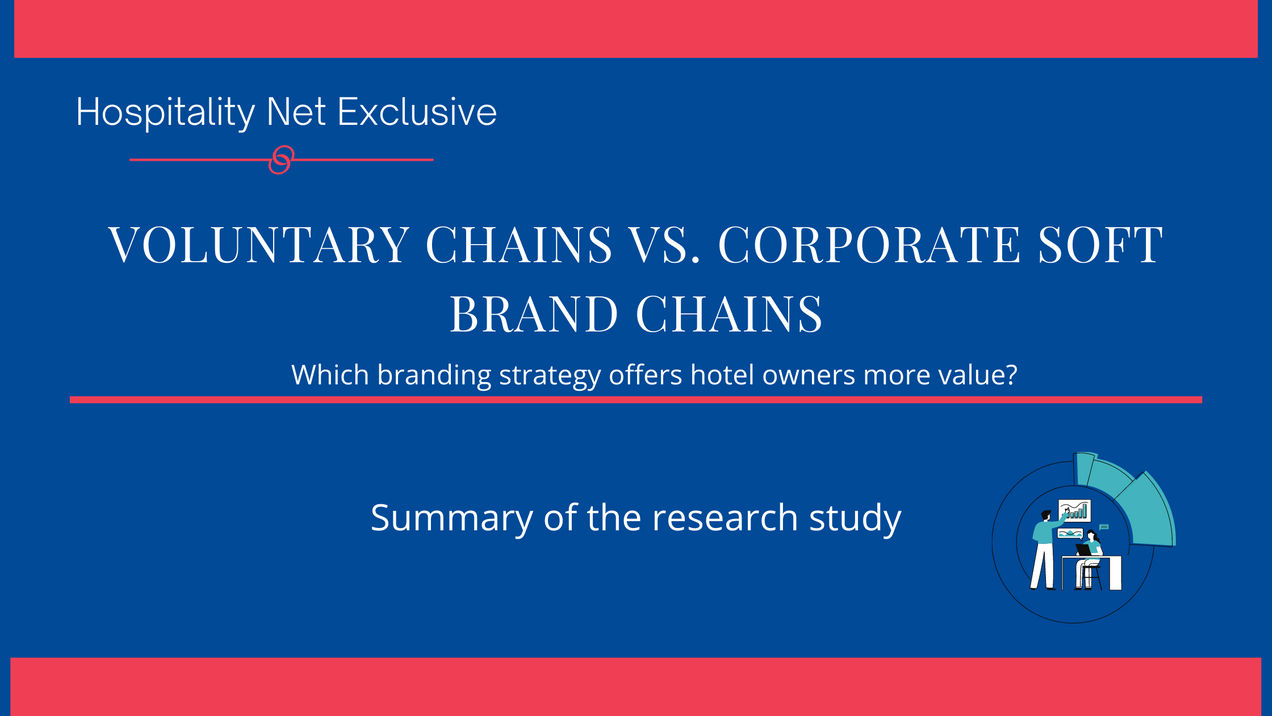
Hotel brand affiliation through a franchise agreement: Pros and Cons
The most common way for hotel owners to acquire a brand name is to enter a franchise agreement. I reviewed the literature to uncover the advantages and disadvantages of hotel brand franchising.
Independent boutique hotels have received much attention in recent years, but the industry remains increasingly branded. In the United States, 70% of hotels are branded, and the rest of the world is 45% branded (Stone, 2018). It is expected that brands will continue to expand, and hotel owners will look for economies of scale via access to global reservations systems, training programs, and marketing support (Stone, 2018).
If the decision is made in favor of affiliation, the most common way for hotel owners to acquire a brand name is to enter a franchise agreement (Carlbäck, 2017). With a franchise agreement, the hotel owner receives permission to use the brand name, trademarks, logos, as well as access to the brand's loyalty program, distribution channels, and central reservation system. It is estimated that 80% of branded hotels are franchised in the United States, and the rest of the world is 31% franchised (Stone, 2018).
Pros
The traditional franchise model has many benefits. Brands dictate attributes of the property and operational standards, affording owners easier choices (Freed, 2013). Brand standards assure customers that they will receive the level of service and amenities they expect. Operational manuals minimize mistakes and help the hotel adhere to brand standards (Butler & Braun, 2014). Owners save on the costs associated with creating a brand, logos, touchpoints, and standards (Ricca, 2017) and benefit from economies of scale (Holverson & Revaz, 2006). Brands provide services that drive demand and contribute to improved financial performance, such as reservation systems, websites, marketing research and intelligence, marketing support, loyalty programs, access to Global Distribution System (GDS), and quality control (Butler & Braun, 2014; Dev, 2015; Holverson & Revaz, 2006; Kwortnik, 2011; Stone, 2018).
Stone (2018) stressed the importance of access to loyalty programs as its contribution to sales is significant. For example, in 2016, 50% of room nights for Marriott came from loyalty members; for Hilton, it was 56% (Stone, 2018). Most developers and lenders prefer to finance hotels that are attached to brands because it reduces the risk of generating demand for the hotel (Freed, 2013).
Among other benefits that franchise agreement with brands gives hotel owners, literature mentioned access to service standards and training programs (Kwortnik, 2011), accumulated learning and experience, functional expertise, ready-made infrastructure (Enz & Canina, 2011), access to new global markets (Holverson & Revaz, 2006), lower online travel agency (OTA) commissions, procurement savings (Stone, 2018).
Cons
Affiliation comes at a cost. Franchise fees are among the most significant expenses for most hotels. On average, in the United States, the franchise cost is 11% of rooms revenue per year. Upper upscale and luxury brands have the highest cost of 12.2% of rooms revenue per year (Russell & Kim, 2018). Franchise fees include: Initial fee, royalty fee, continuing fee, marketing fee, reservation fee, loyalty program fee, and miscellaneous fees (Russell & Kim, 2018; Stone, 2018).
Owners also face other expenses associated with maintaining costly brand standards (Butler & Braun, 2014; Stone, 2018), meeting brands operating requirements such as logos, signs, reservation systems, and technology requirements (Rushmore, 2004), complying with strict physical plan standards which require on-going investments (Holverson & Revaz, 2006).
The literature agreed that the second significant disadvantage of the franchise agreement is the duration of the contract, which could be ten to twenty years-long, and the cost of early termination is very high (Holverson & Revaz, 2006; Stone, 2018). The terms of franchise agreement do not protect hotel owners from the possibility of brand dilution or decline in value (Butler & Braun, 2014).
Other disadvantages of franchise model include loss of flexibility in pricing, promotion, and operation (Dev, 2015), risk of being de-flagged and losing franchise fees for failure to uphold brand standards, reduced ability to be entrepreneurial (Kwortnik, 2011), loss of a certain amount of control and management independence, unequal distribution of brand's resources between markets (Holverson & Revaz, 2006) and negative affect on the hotel's innovation, agility, and adaptation to new industry trends (Enz & Canina, 2011; Stone, 2018).
Rushmore (2004) posited that the consolidation of hotel chains reduced benefits of affiliation because the hotel could be competing with other brands of the same chain in the local market. On the contrary, Stone (2018) suggested that industry consolidation could be positive as brands may gain massive market share and negotiation power that could translate to powerful financial results for hotel owners.
References
Butler, J., & Braun, R. (2014). The hotel management agreements and franchise agreement handbook. (3rd ed.). Los Angeles: JMBM Global Hospitality Group. Retrieved from http://www.hotellawyer.com/resource-center.html/
Carlbäck, M. (2017). To Be or Not to Be... - Brand Affiliation in the Hotel Industry. Doctoral dissertation in business administration. Department of Business Administration. School of Business, Economics, and Law at the University of Gothenburg. Retrieved from https://gupea.ub.gu.se/handle/2077/53941/
Dev, C. S. (2015). Hotel brand conversions: What works and what doesn't. Cornell Hospitality Report, 15(21), 3-11. Retrieved from https://scholarship.sha.cornell.edu/chrpubs/224/
Enz, C. A., & Canina, L. (2011). A comparison of the performance of independent and franchise hotels: The first two years of operation. Cornell Hospitality Report, 11(21), 6-13. Retrieved from https://scholarship.sha.cornell.edu/chrpubs/47/
Freed, J. Q., (2013). What role do hotel brands play? Hotel News Now. Retrieved from http://www.hotelnewsnow.com/Articles/19422/What-role-do-hotel-brands-play-today/
Holverson, S., & Revaz, F. (2006). Perceptions of European independent hoteliers: Hard and soft branding choices. International Journal of Contemporary Hospitality Management, 18(5), 398-413. doi: 10.1108/09596110610673538
Kwortnik, R. J. (2011). Building and managing your brand. The Cornell School of Hotel Administration on Hospitality. Hoboken, NJ: John Wiley & Sons, 388-404.
Ricca, S. (2017). Brand to independent: The costs, benefits of the switch. Hotel News Now. Retrieved from http://www.hotelnewsnow.com/Articles/147061/Brand-to- independent-The-costs- benefits-of-the-switch/
Rushmore, S. (2004). A case for being independent. Hotels Magazine. Retrieved from https://www.hvs.com/article/953-a-case-for-being-independent
Russell, K., & Kim, B. (2018). Hotel Franchise Fee Guide - USA. HVS. Retrieved from https://www.hvs.com/article/8552-2018-United-States-Hotel-Franchise-Fee-Guide/
Stone, R. (2018). A deep dive into operating and branding strategies for hotel owners. Skift Research. Retrieved from https://research.skift.com/report/a-deep-dive-into-operating- branding-strategies-for-hotel-owners/




